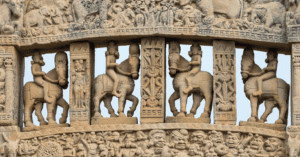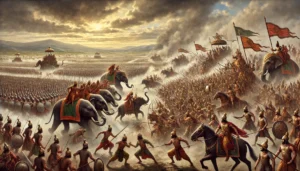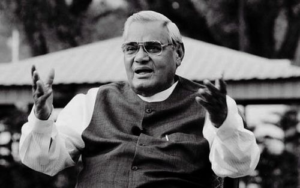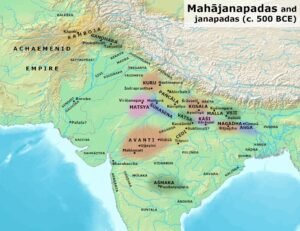A Capital Born on the River’s Edge
On the western bank of the Ganga, where the sacred river bends gently before stretching eastward toward Bengal, rose a city that would become the envy of kings and the obsession of conquerors: Kannauj. For centuries, this riverfront capital glittered as the nerve center of North India. It was here that monarchs staked their claim to legitimacy, monks debated the nature of truth, and traders ferried perfumes and silks along caravan routes that reached as far as Persia and China.
Timeline: The Rise & Fall of Kannauj
To speak of Kannauj is to speak of India’s medieval soul — ambitious, cosmopolitan, and tragically impermanent.
Ancient Origins
Archaeology suggests that Kannauj’s history stretches back to at least the Mauryan era (3rd c. BCE), when it was known as Kanyakubja (“the city of the hunchbacked maiden” in Sanskrit legend). It lay on the fertile plains of the Ganga, a natural node on trade routes linking eastern and western India, as well as the north to Central Asia.
Although it rose in prominence later, the Gupta age (4th–6th centuries CE) first gave Kannauj a place within the orbit of major political centers, foreshadowing its later rise.
The Harsha Era: Where Scholars Walked With Kings
In the 7th century CE, Kannauj was propelled to imperial fame under Harsha Vardhana, the philosopher-king who made the city his capital.
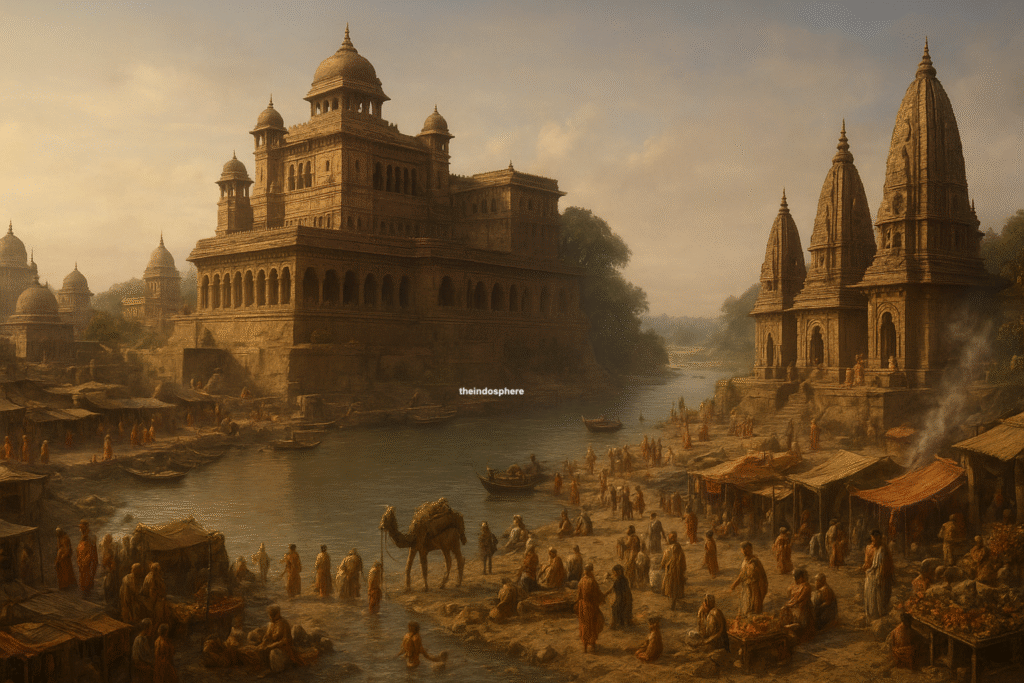
Xuanzang, the Chinese pilgrim who journeyed across India, left us vivid notes: over 100 monasteries lined the avenues, thousands of monks debated in courtyards, and shrines of Shaiva, Vaishnava, Buddhist, and Jain traditions coexisted within the fortified city walls.
Harsha presided not only as a ruler but as a convener of minds. His grand religious council of 643 CE brought together kings, scholars, and monks from across Asia — an intellectual spectacle rivaling any medieval court of the world. Kannauj in Harsha’s time was less about stone and mortar, and more about ideas, dialogue, and spiritual ambition.
The Pratihara Zenith: Imperial Kannauj
By the 9th and 10th centuries, Kannauj had shed its scholarly modesty and emerged as a city of imperial magnificence under the Gurjara-Pratiharas.
High walls and fortified gates encircled sprawling wards. Temples soared skyward in the full bloom of the Nagara architectural style, their stone shikharas catching the Ganga’s sunlight. Royal processions with elephants, cavalry, and banners paraded through ceremonial avenues, while attar workshops perfumed the air with rose and sandalwood distillations — the fragrance that still defines Kannauj today.
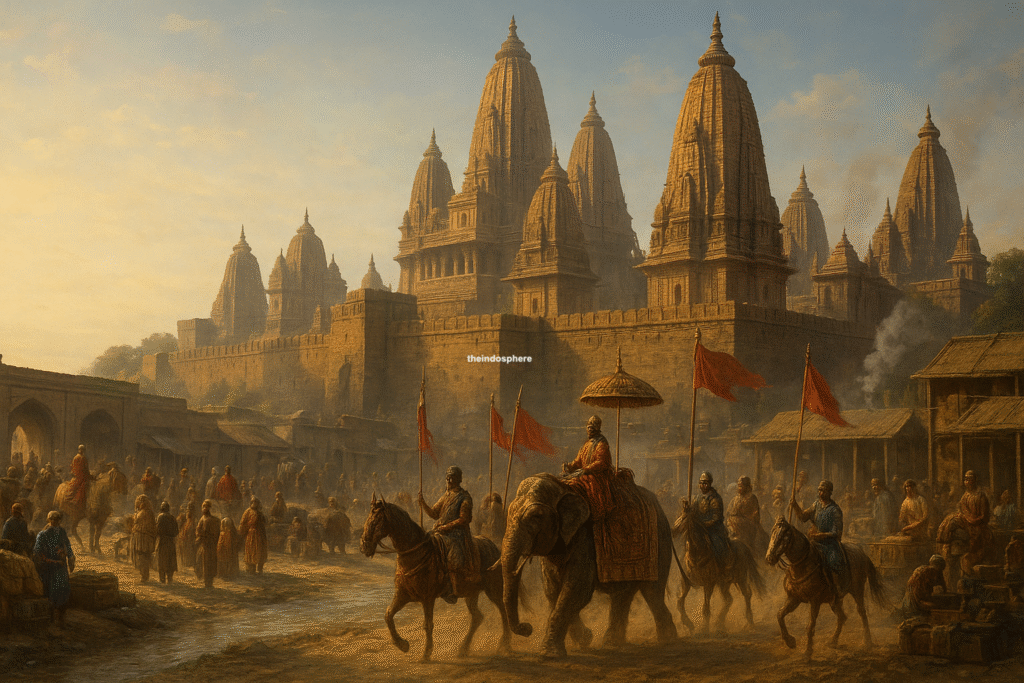
Merchants from Central Asia, Persia, and Bengal crowded its caravanserais, exchanging horses, ivory, silk, and spices. If Harsha’s Kannauj was a city of the mind, the Pratiharas’ Kannauj was a city of power — cosmopolitan, wealthy, and imperial in its bearing.
So important was Kannauj that control of the city defined medieval geopolitics. The Tripartite Struggle — a prolonged contest between the Pratiharas, Palas, and Rashtrakutas — was not just about land; it was about who could claim Kannauj, the jewel of the Ganga plain.
The Long Shadow of Decline
But the same grandeur that made Kannauj irresistible also made it vulnerable. From the 11th century onward, waves of invasions chipped away at its splendor.
Mahmud of Ghazni raided its temples, plundering wealth that once drew pilgrims and traders. Muhammad of Ghor and subsequent Turkic conquests further destabilized the city. Palaces crumbled, shrines were desecrated, bazaars emptied. The Ganga still flowed, but the city’s heartbeat slowed.

By the 12th century, Kannauj had faded into a memory. The new axis of power shifted toward Delhi, leaving behind only ruins and echoes. Once called the “imperial pivot of India,” Kannauj became a shadow of its own legend — a city that had held empires in its grasp, and then slipped silently into history.
Kannauj Today: The Fragrance of Memory
Yet Kannauj is not entirely gone. Today, it survives as India’s perfume capital, where traditional distilleries continue to produce attar in clay stills, much as they did a thousand years ago. The air is heavy with rose, sandalwood, and vetiver — fragrances that once perfumed imperial courts.
To walk through Kannauj now is to feel a paradox: a small town with the soul of a lost empire. Its ruins whisper of kings and councils, temples and traders, of grandeur too vast to sustain.
Kannauj’s story is both triumphant and tragic. It rose on the shoulders of philosophy and faith under Harsha, reached imperial might under the Pratiharas, and fell under the weight of conquest and shifting power.
If Pataliputra was ancient India’s political giant and Delhi its medieval titan, then Kannauj was the luminous bridge — the city that, for a few brilliant centuries, held the world’s gaze.
- 📖 Citations & Sources:
- Bāṇa, Harshacharita (7th c. CE).
- Xuanzang, Great Tang Records on the Western Regions (7th c. CE).
- R.C. Majumdar, The History and Culture of the Indian People, Vol. 3.
- Al-Biruni, Tahqiq-i-Hind (11th c. CE).
- Hasan Nizami, Taj-ul-Maasir (13th c. CE).

